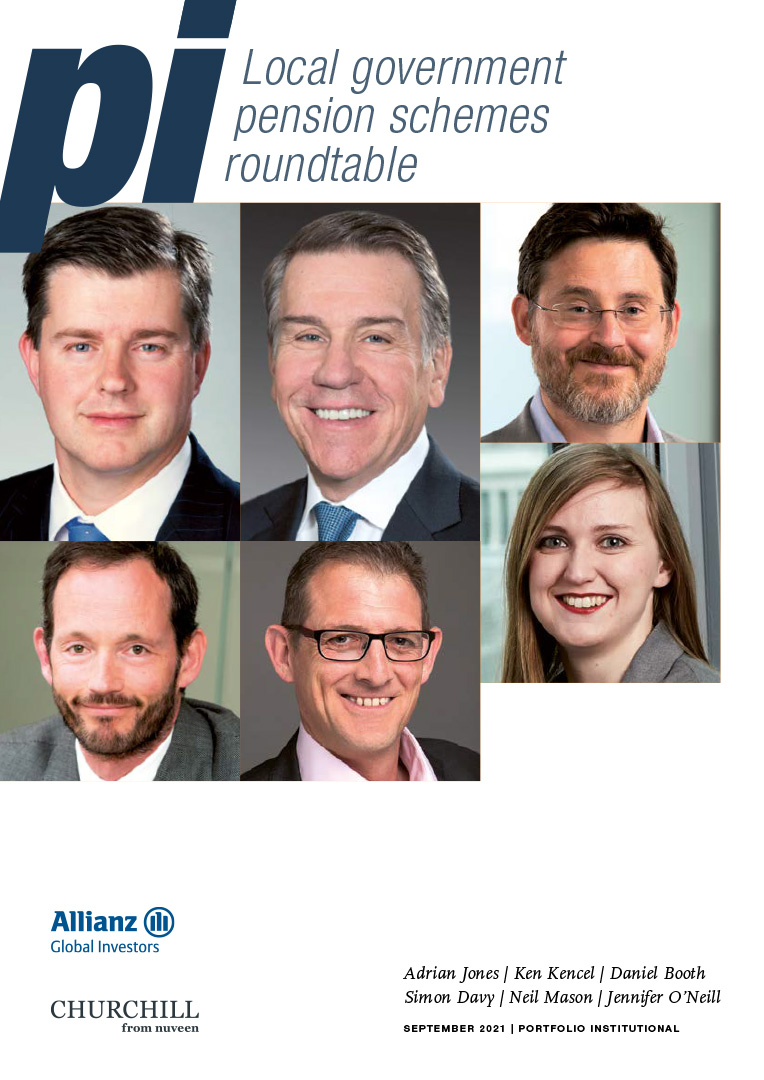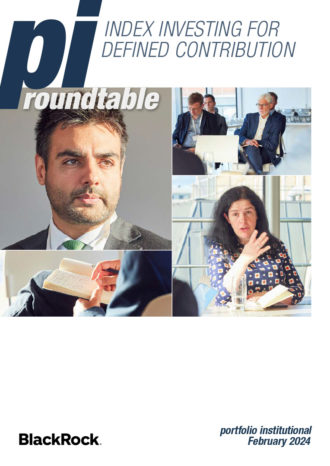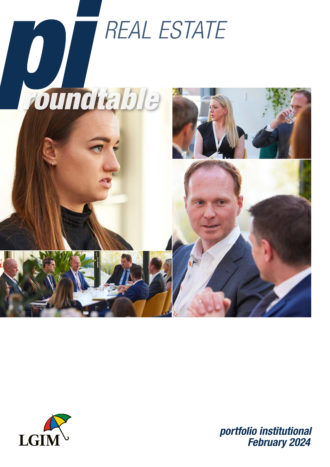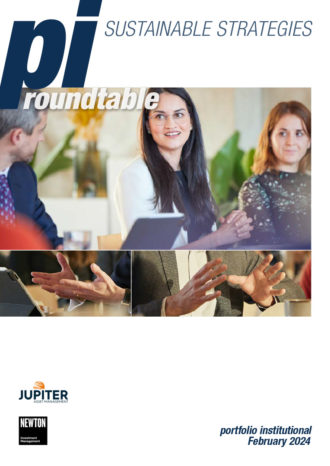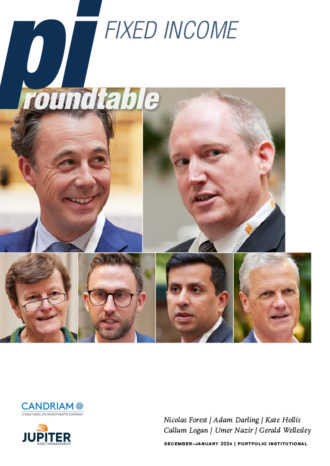Local government pension schemes (LGPS) are influential in the UK’s investment landscape. Indeed, the 89 such retirement funds in England and Wales collectively manage hundreds of billions of pounds in assets. The government wants them to be even more influential.
Five years ago, it encouraged public sector schemes to consider funding the upgrade of the UK’s crumbling infrastructure by asking them to pool their capital. Now it wants them to invest in British assets as the government seeks to boost the economy post-Covid. But what are the stewards of more than £250bn collectively putting their money to work? Are they benefiting from pooling? And are they interested in “build back better”? We spoke to the schemes, their asset managers and advisers to find out.
Watch the roundtable:
The panel
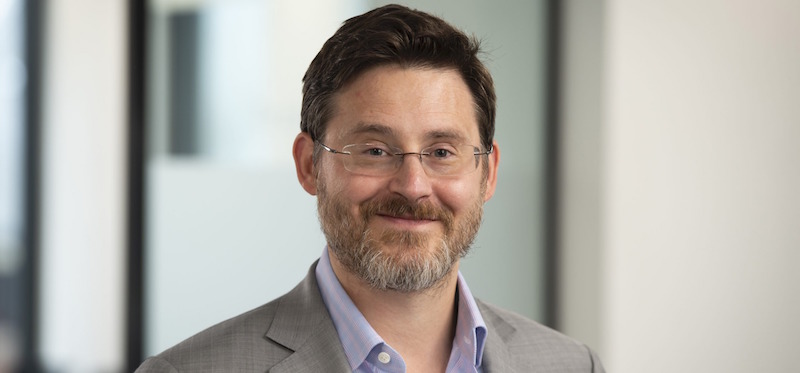
Daniel Booth, chief investment officer
Border to Coast Pensions Partnership
Daniel is an investment professional with twenty years’ capital markets experience across both traditional and alternative investment asset classes. He was appointed as the first permanent chief investment officer of Border to Coast in September 2018. He joined after an 8-year tenure at Saudi Aramco, where he was head of portfolio management, responsible for the investment of large corporate pension, insurance and endowment portfolios, all of which were invested globally across the full range of asset classes.
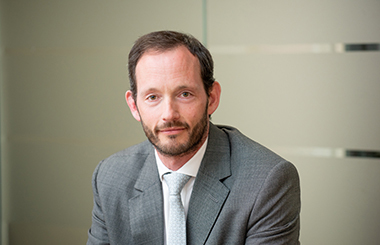
Simon Davy, head of private markets
Local Pensions Partnership Investments
Simon joined LPP in December 2016 after 21 years in investment banking. He is part of the team responsible for the origination, execution and management of LPP’s infrastructure investments including GLIL Infrastructure.
Simon spent 15 years working for Bank of America Merrill Lynch in a variety of roles across the debt and equity capital markets. These included advisory work, predominantly with UK corporate clients. Prior to that Simon spent six years at JPMorgan.

Neil Mason, strategic finance manager – pensions Surrey County Council
Neil is strategic finance manager at Surrey County Council with responsibility for the Surrey Pension Fund. Along with its 11 partner funds, Surrey is part of the Border to Coast asset pool. Transitioning of assets moves on a pace and continues to be an exciting and challenging project.
Neil is the independent member of the Local Pension Board of the London Borough of Hounslow and a member of the PLSA Policy Board; he chairs the London pension officers group. He has a degree in history and is a season ticket holder at QPR.
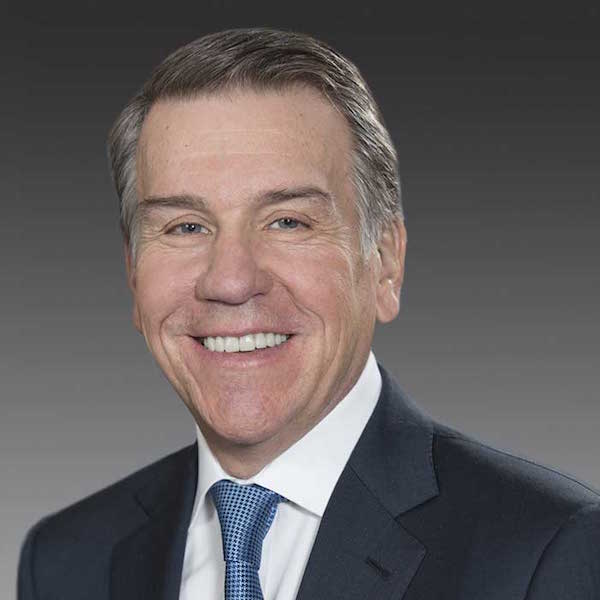
Ken Kencel, president & CEO
Churchill Asset Management
Ken serves as president and CEO of Churchill Asset Management, an affiliate of Nuveen, the asset management arm of TIAA, a Fortune 100 financial services company. He also serves as chairman of the board, president and CEO of Nuveen Churchill Direct Lending, Churchill’s publicly registered business development company. Throughout his over 35-year career in the investment industry, he has accrued a broad range of experience in leading private credit investment businesses.
Previously, Ken served as a managing director of The Carlyle Group, where he also served as president and a director of TCG BDC, Carlyle’s publicly traded business development company. Prior to that he founded and was president and CEO of Churchill Financial Group, served as head of leveraged finance for Royal Bank of Canada and was head of Indosuez Capital, a leading middle market merchant banking and asset management business in partnership with Credit Agricole Group.

Adrian Jones, portfolio manager, AllianzGI
Adrian is a director in the investment team at Allianz Global Investors, based in London. Adrian is the most senior portfolio manager in the team responsible for UK asset origination and leading manager of the Allianz Resilient Credit Euro Fund.
Before joining AllianzGI in 2012, Adrian was a managing director within MBIA UK Insurance. He was primarily responsible for infrastructure debt, project finance and public finance origination and execution. Adrian also provided senior support to the transaction monitoring teams, negotiating major variations and complex remediation.

Jennifer O’Neill, associate partner – responsible investment, Aon
Jennifer has responsibility for providing strategic advice to UK institutional investors ranging from £300m to £25bn. She has responsibility for client education and delivery of bespoke solutions to meet clients’ needs.
Prior to joining Aon in 2017, Jennifer spent four years as a fund manager at Quilter Cheviot (part of Old Mutual Group), where she was responsible for portfolio construction and management of long-only bespoke portfolios for pension funds, charities, and endowment funds.
The LGPS Discussion
How is the pandemic impacting LGPS investment strategies?
Daniel Booth: We decided not to pursue a private equity co-investment in a transport asset due to Covid, as there was uncertainty around some of the dynamics. There has been a marginal impact on our alternatives programme, but, generally, we are in line with expectations.
In alternatives, we adapted to the investment environment and focused more on special situations/rescue lending in our private credit portfolio during this period.
On the equity side, we saw quite a big rotation from value to growth and then vice versa when vaccines were announced in November.
Coming into 2020, tech and growth stocks looked highly expensive compared to the broader market. So, our external funds are slightly tilted towards value stocks, although we do not have big factor exposures.
There was a market dynamic where growth and technology stocks were expensive and became more expensive due to the crisis, and, with delays in the regulatory reviews. We also launched a credit fund in March, which was an interesting time. We caught the peak of the spreads, which has led to pretty good absolute and relative performance.
There have been marginal delays in our projects, but we have been building the business, hiring people and deploying money as expected, albeit with a slight, but not material, delay.
Simon Davy: There were some big bouts of volatility around the initial lockdown. That presented opportunities in private credit, with flexibility leading to a healthy performance where there was uninvested capital.
If I look across real estate, our direct UK assets and funds held up comparatively well. There were issues over valuations and valuation uncertainties, but those assets have performed well. I would not say we have changed the investment thesis here, but it has accelerated some existing trends, such as challenges for retail and an increasing focus on logistic centres over office space.
On the private equity side, there were concerns over the need to potentially prop up some businesses that were heavily geared or would suffer from an economic shutdown. It did not materialise as badly as expected and private equity broadly held up well.
On infrastructure, there were delays in the first half of 2020, before a surge of activity towards the end of the year, which carried on into 2021. This has been in specific sub-sectors. An airport would have been a core infrastructure investment pre-Covid. Investors will probably think carefully about when to get into airports again.
Broadly speaking, across the private markets, the level of liquidity pumped into the markets by central banks means we will continue to see opportunity and, unfortunately, high asset prices.
Do you see an opportunity for long-term capital in re-building post-Covid?
Neil Mason: We have increased our expectations in infrastructure. That opportunity is more readily available through the access to additional expertise that pooling brings.
We have increased our allocation to private market assets across the piece from 5% through to 20% with a dedicated 6% allocation to infrastructure. We are quite optimistic about the opportunities in infrastructure.
The political will for infrastructure investment is there, but are the projects?
Mason: There could be limited projects available in the UK and there is certainly lots of competition for them. As pension fund managers, we have a duty to cast our gaze wider. We are finding opportunities outside the UK, and so can allocate at the pace required.
Ken, how are you working with local government pension schemes?
Ken Kencel: We have many local government pension schemes as investors. They focus on consistent, stable recurring yields to support their members.
Private credit, at the more conservative end of the market, provides this and has been a focus of ours throughout our his- tory. We have invested more than $17bn (£12.2bn) in middle market loans over more than 15 years.
I would characterise what we do as bank replacement. The market in the US has transitioned to private credit managers, the largest of which have developed various specialties. Ours is on the more conservative, more traditional end of the lending market, consistently delivering a 7% to 8% current yield.
Throughout Covid we have not had a single loss or default. Our portfolio has performed extremely well. Covid has been an interesting dynamic and focusing on top tier private equity partners who have well capitalised businesses that are away from oil and gas, travel, leisure, restaurants and retail – none of which we have historically invested in – has served us well.
It has been an interesting time for private credit and an opportunity for more traditional managers to distinguish ourselves in the market.
What are you working on for local government schemes, Adrian?
Adrian Jones: Exclusively on the infrastructure and private credit side of things as well as some specialist property. We have done £20bn in infrastructure over the past nine years globally, as it is one of those asset classes which delivers a stable recurring income.
Generally, infrastructure performed as hoped during Covid. The reality is that you do not get the same yield on infrastructure as you get from more punchy asset classes, but you expect when events like Covid comes along that you get your return and do not suffer losses – and that has been the case. We have never had a payment default.
Within infrastructure, certain sectors have been badly affected: airports being the obvious one, whereas others you may have expected to be affected, like toll roads and marine ports, have shown remarkable resilience. Goods kept flowing through marine ports even when private travel was curtailed. Toll roads bounced back to near pre-Covid levels as soon as people were allowed to travel again.
Airports are a different story and shows the value of good asset selection. As we come out of Covid, the recovery of air- ports will reflect where you are in the pecking order of essentiality, the structure of your deals and the quality of the equity sponsors as to whether they will engage with creditors and address issues. Covid has proved things that people once thought were theoretical are real and hopefully we are delivering to our clients stable recurring yield even when the whole world goes crazy.
On another point, a lot of the stability and recurrence that we like about infrastructure is because it has historically been things we understand, like roads, bridges and ports. The demand for new infra- structure is in IT and communications and the lockdown has shown how important that is.
It is different financing high-speed broadband, which carries new technology and competition risks, than financing a near monopoly marine port. Yet through making the right asset selections there is a chance to differentiate yourself. Build back better will be interesting.
Jennifer O’Neill: There is a lot of resonance with what Adrian outlined in the discussions I am having across the LGPS space. One infrastructure theme that has been consistent throughout the pandemic is renewable energy.
The theme of new technology and the transition to a low carbon economy as the overall objective and strategy of a fund is something that comes through strongly. We are all aware of the different range of stakeholder pressures across the LGPS when it comes to managing those dynamics, such as how funds set a net zero investment strategy target when perhaps a local authority has declared a climate emergency and set a commensurate target.
Those are conversations which funds are looking to address, and implement across their portfolios, that feed into real asset allocations as well as conventional vanilla assets.
Five years on, are you seeing any benefits from pooling?
Mason: Pooling has been beneficial for Surrey. We have a small team, with limited expertise in investment due diligence. What pooling has provided is direct savings through economies of scale.
I consider Daniel’s team at Border to Coast to be an extension of my investment team. We have access to specialist talent that we might not otherwise have had, so we can tap into markets we were not able to, such as private markets. Looking forward, the suite of opportunities within our pool gives us scope to potentially look at hybrid offerings, whereby we can access internally managed resource and the savings that can bring.
There is a soft benefit of pooling which is not perhaps the first thing on an investment panel’s mind, but the opportunity to collaborate with other partner funds to come to conceptual positions and learn best practice has been invaluable for Surrey. It has been a positive move for us.
Simon, have your member funds felt the full benefits of pooling, or are there areas you need to improve?
Davy: The evidence is there, when you look across the international markets, with Canada and Australia running $100bn plus funds. The scale and opportunity that brings in terms of resourcing, makes a difference. In that context, spreading LGPS funds across 89 schemes seems madness.
For the schemes in Local Pensions Partnership Investments, we have built up a bit of scale, certainly on the private mar- ket side, and are starting to engage on direct and co-investments that enhance governance and the client’s experience, in terms of what they are aiming for. If we are going to bring in a responsible investing agenda, for example, it is much easier for them to control.
The other point is that if done well, you can reduce fees. We have tripled the size of the real assets team over the past four years but are still a relatively small team. If you are running global strategies, you need the active managers and the fund allocations. It has been positive in access- ing capital. There are good examples in direct infrastructure, where pooling has helped us access transactions and deals that we would not otherwise have done.
Daniel, has pooling been a challenge for you?
Booth: On the cost front, which was one of the initial drivers, it has been a big success. Generally, when you think about costs, the ability to internalise some external activities will save you fees, but you need scale to do that. We run about £25bn active in fixed income and equities, half of that we do in house while the rest is externalised.
The in-house funds are cheaper although both implementation approaches are considered appropriate. There are also savings from dividend tax reclaims, stock lending revenues in addition to how efficiently you negotiate headline fees. There are many costs and efficiencies you can make, but the real opportunity is on the investment side.
Going to the international markets and saying that we have over £50bn of assets with a long-term duration and are seeking growth investment opportunities, then everyone in the alternative space will want to speak to us. Our individual partner funds would not have that level of access, but to have a professional team at Border to Coast with that scale of assets means we are a credible partner to the industry.
It also enables us to have a much bigger industry voice, so when we are promoting standards in ESG. We have done a lot of work on public assets and are expanding that across the range of assets on the platform along with providing our clients with professional risk management and larger investment teams with less key personal risk.
As Neil mentioned, there are quite a range of options. We will be launching shortly, a non-investment grade credit fund, which will give broad access to different parts of the non-investment grade credit markets, as well as access to global real estate and global alternative strategies across different verticals that we manage.
The range of options will improve, although sometimes the time- frame to launch those will be a little bit longer as we have so many parties involved in securing agreements with. A collective voice is a big thing.
It has been a positive experience, but we have not done well enough to get that message across. We will work on that going forward.
Adrian, are LGPS’ interested in your residential housing fund?
Jones: It is fairly new and part of the level- ling up agenda. The fund addresses the financing of homes for younger people and is a hybrid between renting and out- right ownership. This is only possible because of our relationships with local government schemes. It has taken three years to bring it to market in a form which works for all stakeholders and LGPS members.
It is an asset class everybody is familiar with. Everybody has an opinion on housing and it is a way for LGPS schemes to deliver something which gives people a chance to get on the ladder and provide a platform to talk about ESG and home efficiency improvements.
Like everybody else, we love financing renewable energy, big shiny things which have a direct impact on carbon, but quite mundane things like cladding on buildings and replacing leaky windows cumulatively have a bigger impact. Through property investment, you can do that.
It is to address a financing need and is another way of bringing this recurring income that the investors want in a way which hopefully is win-win for everybody.
We have always seen residential property as part of the infrastructure spectrum, a lot of the infrastructure we talk about ultimately gets paid for by the household, whether it is utilities or charging electrical vehicles, which tends to have a link to where people live.
We do not see property as always being completely distinct from infrastructure. It has certainly been a hybrid area where you can get the same cashflows if you structure it properly. That is one of the good things that has come out of Covid. People have taken a long hard look at the use of property and are willing to consider new things.
How did private credit perform during Covid?
Kencel: It has been an interesting journey. When Covid became more severe, we focused on our portfolio companies and worked with our private equity sponsors to make sure they had adequate liquidity and were able to weather the storm.
From our perspective, Covid has proven to be a validation of our historical investment approach. We do not invest in oil and gas, which saw an immediate impact, as did travel, leisure, restaurants and retail – none of which we have historically invested in.
So, in many respects, our portfolio fared much better than many other direct lend- ers because of our more conservative approach.
A modest number of our companies were impacted by Covid: principally in health- care and businesses that were fundamentally good but were closed for a short time. Pretty much across the board, the private equity firms we work with recognised that it was not a long-term secular issue. So, they stepped up immediately to provide liquidity and support as needed. It helps that our average contribution in our deals has been around 55% to 60% equity.
A lot of capital is backing these high-quality businesses and so support came quickly. As I mentioned, we did not have a single default or loss during Covid. That is attributable to the sponsorship dynamic. What we then saw was a tremendous resurgence in activity.
In the third and fourth quarter in 2020, there was a huge uptick in investment activity, primarily with non-Covid impacted businesses which were, in many respects, benefiting from Covid.
We financed a company in October that was a provider of latex equipment for food service and processing. The business took-off massively during Covid and they brought in private equity to help facilitate the growth. We earn an attractive return of typically 8% or more from businesses that have not been impacted, or are maybe benefiting, from Covid, such as software as a service. We have also seen a huge uptick in certain healthcare areas, logistics and distribution.
These are effectively infrastructure invest- ments in a post-Covid economy where folks work remotely and look to connect in different ways, while goods and service are delivered to the home.
In many respects, it has been an accelerator of investment activity. We had a record quarter in the fourth quarter 2020 with our senior lending business investing nearly $2bn (£1.4bn).
Q1 2021 saw a lot of activity, which ultimately culminated in the second quarter being the second most active quarter in our history. We are seeing generally better pricing, typically anywhere from 25 to 75 basis points have better yields, which is a result of the disruption in the market. Premiums in the syndicated market are at all-time highs, typically as much as 200 or even 300 basis points.
We have seen a rotation away from high yield as many of our investors look to position themselves for potentially rising interest rates. Our loans are all floating rate, so investors see that as a natural hedge against any potential inflationary pressure.
Covid for us was a watershed year in 2020. We raised over $6bn (£4.3bn) and invested about the same amount across our strategies. Looking forward, we continue to see good economic growth.
Sounds like a good time to invest in private credit.
Kencel: It is a great time. TIAA, a pension scheme for teachers in the US, allocated about $1bn (£719m) to our senior lending strategy in 2019 and 2020, which increased by 50% in 2021. This was a direct result of the performance through Covid and the stability of the valuations in our portfolio.
I mentioned losses. Our valuations have never reached below 97 cents on the portfolio. That was more due to market disruption in spreads not credit.
It is a great time. Pricing is up, certainly on a relative basis. Our covenants and structures remain reasonable, which have served us well to bring private equity firms back to the table in addition to the equity they contributed.
So, better structures, better pricing, reasonable leverage and an economic recovery that should fuel solid growth for those businesses that are not Covid impacted as the economy recovers.
Are your clients starting to see this market differently than they did before the pandemic?
Kencel: They are seeing excellent relative value to the public markets, various other asset classes and within private credit itself.
Investors increasingly do not want to just focus on the lender that can roll the dice to get a marginally higher initial yield, but also on the lender that can deliver a stable, consistent, recurring, sleep at night yield. That plays to our strengths and our investors have significantly responded to that. In 2020, we raised about $6bn (£4.3bn) in new capital and, interestingly, in 2021, that number is already close to $9bn (£6.4bn).
That means we are able to seek more per deal. That is important because the private equity firms we deal with need a full solution. Increasingly they are turning away from public markets – which are more volatile, have more risks, more disclosure issues and ratings issues. Instead, they are going to one or two key larger private credit managers and saying, “Can you deliver $250m or $300m?” What it has done is narrow the number of large providers who can do that.
So, by raising more capital, yet maintaining diversity at the fund level, we can deliver a $300m to $400m solution. That distinguishes us from our peers. More capital helps us access a broader pool of opportunities and provide a solution relative to a syndicated public markets execution. It has been helpful to the growth in private capital relative to the public markets.
Jones: That ties in what pooling is trying to achieve. This is a phenomenon we have seen in infrastructure where if you are doing a big project, you have a lot of things to manage so having a syndicate of 25 lenders is something you could do without. It has always been a differentiator in big ticket infrastructure to try and get deals of sufficient size to maintain diversity and make big single asset investments.
That is analogous to what pooling is meant to be doing for the LGPS. They bring together that concentrated firepower and get the benefits Ken mentioned. It is not just pricing. When projects are at a certain stage, pricing is almost a secondary discussion. It is on what terms is capital available and how long will it take. That is where the LGPS will push more into passive roles, but through pooling they can sit at the top table and say: “We can deliver X% of your funding need, but there are special terms.”
That can then extend to things like ESG reporting. If you want bespoke ESG covenants and the market perhaps is not there yet, you need to be big enough to encourage people to accommodate that.
LGPS is trying to create concentrated pools of capital that are more effective. Private markets are the way to do that because in the public markets you do not want to control a whole issue. We have seen that when issues arise, such as Covid, if you are one of two or three creditors you can resolve things quickly. If you are one of many, everything takes longer.
Booth: There have been a lot of opportunities in rescue finance and specialty finance during the crisis. We have now rotated into more direct and senior lend- ing from the end of 2020 because pricing is up, covenants are better and so risk-adjusted returns look relatively attractive.
What I would say is: there was an element of concern with direct lending pre-Covid as sponsors were putting add-ons into earnings numbers. So, the multiples were not what they were reported as being. You see that undesirable practice sometimes at the end of credit cycles, but the opportunity is more attractive now than it was pre-Covid.
I am still hearing that competition in private credit is creating more “cov-lite” deals. Is this something you are aware of?
Davy: For sure. Coming into Covid, a borrower friendly environment was emerging with a squeeze on the terms under which people were able to borrow.
For the larger direct lenders, when you get to a certain scale, the need to deploy the capital is greater than the opportunity set. You need to go for larger deals and so it begins to look like the public markets. We certainly saw the pricing and the terms for borrowers getting better and better. Covid resulted in a bit of volatility, of repricing of senior loans and a squeeze from the traditional lending base of banks.
My general observation across all private markets is that we saw better terms for certain asset classes early in 2020, but it has moved on again. Asset prices – with the exception of a few sub sectors – have increased. Prices for assets and yields are lower in infrastructure and real estate, and there is a huge quantum of capital looking to get stable returns. The challenge for those deploying capital in this environment is picking the right type of opportunities and managers.
Everybody is offering a net 8% to 10% for almost every asset class in the private markets. Given what has happened to real yields and what is happening to the quantum of capital chasing deals, that is not going to happen. So, be careful about where you deploy capital.
What questions should investors ask when selecting a private credit manager?
Kencel: Certain managers, and I would not consider us among them, have gone to size alone to compete. When you do that, you bump into the syndicated loan market and that becomes your competition.
We have tried to stay within our lane. Our typical company is in the traditional middle market where average cashflows are around $40m to $50m, which is comfortably within the lane of better structures and covenants, but there is a dynamic playing out where the private equity firms are defaulting to private credit and giving us access to great terms.
What I would recommend investors think about when evaluating managers is, number one, the consistency and stability of the investment team. Not just the investment committee members, but the broader organisation.
How are they attracting and retaining talent throughout the investment ranks? Do they have an experienced team with a long track record of investing through cycles, through the financial crisis and Covid? How has the strategy performed? Has the manager consistently focused on that strategy and delivered for investors?
Then there is consistency of approach and alignment. This is where we as a firm shine. About 35% of every loan we make is on behalf of our parent company, TIAA. We look at the world similar to how pen- sion schemes do in the UK, throughout Europe and even Asia. So, we are an aligned investor who thinks long term.
We have a unanimous investment process, so we either all own it, or we do not do it. The process and the mechanics underlying how an investment gets made, and the alignment with the asset owner, is extraordinarily important.
Also important in sourcing investments is scale. The days of private credit being a boutique where you invest $10m in a business are increasingly hard to come by.
Finally, there is differentiated sourcing. TIAA is one of the largest limited partners in private equity funds in the United States. We get an inside view on performance, research, how the track record has played out and their commitment to ESG. All the private equity firms we work with are defaulting heavily toward upgrading their ESG sustainability policies, and we are following them to make sure we are doing the best in that area.
Differentiated sourcing through those Limited Partner relationships, which frankly is a tremendous advantage, is also something that investors should look at. How do you source your deals? You do not want to compete purely on price. If that is all you are doing, it is not going to work out well. I would look at track record, consistency of approach, alignment, scale and diversified sourcing.
Moving onto ESG. How are local government schemes integrating concerns about climate change into their investment strategies?
O’Neill: Climate risk and opportunities are a major component of the discussions I am party to with LGPS. They are in different stages of their journey here, with some quite advanced in what they are doing. If we look across the last decade, our research and modelling tells us that it was the costliest decade in history for cli- mate related weather incidents.
There is a great case in point right now with North America’s heat wave. Wildfires have a tangible outcome, but there is also a societal impact. People exposed to prolonged periods of heat, if working from home with no air conditioning, will be less productive. Buildings are not designed to cope with prolonged extreme periods of heat as when they were constructed, this was not envisaged.
We are at a stage where we need to think about the physical and transitional implications, particularly across the LGPS where there is an indefinite time horizon, as these are problems that these funds will face for decades.
Dealing with this now is partly why we are seeing the introduction of mandatory reporting across the LGPS, just as it is in the corporate sector. Prompting such evaluations at fund level, using the expertise within pools to help identify and deter- mine where those opportunities sit, is a fundamental piece to that puzzle.
Climate risk is something that takes up a meaningful amount of time, but it is not the only ESG consideration and some- times there is more focus on this than the other issues. ESG issues are interconnected, they relate to one another so we should not focus on one to the exclusion of the rest.
Sounds like the introduction of the Task Force on Climate-related Financial Disclosures (TCFD) will be a benefit for schemes.
O’Neill: There will be a learning process, particularly for funds that do not currently have regard for the TCFD’s recommendations in their reporting. Several do and have been reporting under the TCFD framework for some time now, but ultimately the intention is to prompt that evaluation and illustrate how it is happening.
Whilst there is a focus on the disclosure elements of TCFD, there is a huge amount needing to be done before getting to that point. All the governance-related, strategy-related and risk management-related elements, lead up to that point and it is important for funds who do not have that framework in place to make sure there is adequate time for that. It will take time to work through and will need support, perhaps from pools and asset managers as well as internally from committees.
Davy: Some of our partner funds are focused on climate change and net-zero commitments, while others on the broader ESG agenda.
There is a difference in terms of geographies. Broadly, Europe is a little ahead of North America on this in terms of aware- ness. The resourcing of this is particularly challenging, certainly when we are talk- ing about setting up platforms as we have done under pooling for investments.
In some investment areas, like infrastructure and real estate, there is a focus on appreciating these risks as part of under- writing an investment and the risks to returns. That was probably there already across the investment team, in the way they go about the underwriting, but you need to be slightly more explicit in how you pull out and disclose some of those risks.
From a monitoring standpoint, there is a lot of data that needs to be extracted from the companies for managers to evidence what they are doing. This is an additional burden. There is going to be a need for further resource.
That is a challenge when we are deploying capital in the right areas while trying to underwrite the investments. If you have an additional layer of reporting and what goes with that, you have to do all the steps, one through five, before reporting on it.
You need the data, you have to filter it and it has to be part of your investment process. So, in underwriting and managing of assets there is a swathe of activity that is in addition to what we have been doing on the investment side. That clearly has a resource implication.
You can train part of the team to get up to that standard, but I observe a blizzard of different standards out there. Every acronym that you can think of has been attached to ESG – UN PRI, SDGs and TCFD. There is a great lack of clarity on what everybody should be aiming for. That is a challenge we all face, it is a moving target.
What are the future opportunities for long-term investors?
Kencel: The opportunities going forward are significant. The growth in private credit is still in the third or fourth inning.
What we are seeing in the US is interesting and, if history is any guide, we will continue to see that play out, perhaps with a slight delay in Europe, but the trend is clear: banks are focussing on distribution in the liquid markets.
This is a better business for them; it is more economic and the return on equity is better. Holding large quantities of private credit and middle-market loans is not the future for US banks. If you think about the dynamics of private credit, it was one thing when we were holding $50m of a transaction, but today, the solution is maybe a $250m commitment that a bank would hold because these loans are not tradable or distributable.
What is happening is private credit managers are replacing the banks. We are effectively self-syndicating to our investors, based on a credit criteria as opposed to distribution criteria.
In the syndicated loan market, the standard is: can you sell it? If you can sell it, and you have enough orders, you do it. That is the reality in investment banking. In the private credit world, it is, do we like the investment enough to hold 35% of it on our balance sheet? That is a different, but healthy, dynamic.
The changes in regulation and capital requirements in the US, and which are being rolled out through Europe, will benefit private credit. They will create broader and larger opportunities for institutions investing in private credit and will increasingly favour large, well-capitalised managers with track records that have stood the test of time.
In that sense, thinking about the opportunity long term, the future is extraordinarily bright. In the near term, with economies coming out of Covid, we see terrific risk-adjusted returns, certainly in the floating rate senior lending we do to the extent that if inflation rears its head, our yields will benefit.
I am extraordinarily bullish on the near and long-term opportunities for large scale asset managers like ourselves.
Jones: Quantitative easing is slightly slowing that transition. European banks stayed at the party longer than they would have done because of all the support they have been given and investors need to be positioned for when that liquidity is withdrawn.
When there is no bank syndication, only the good deals get done.Buying to distribute is a completely different mindset than buying to hold. In nine years on £20bn we have only had two investors sell, and that was due to a change in their circumstances. It is a stable source of capital for long-term borrowers, but it does require people to approach it as a long-term partnership, not just the old originate and distribute model.
This is a sector where investors can invest in with confidence because there is a high standard of transparency. We always meet our borrowers, negotiate terms directly. We know what their businesses are about, then it is our decision whether we join them or not. It is not something we are forced to participate in because of an index.

